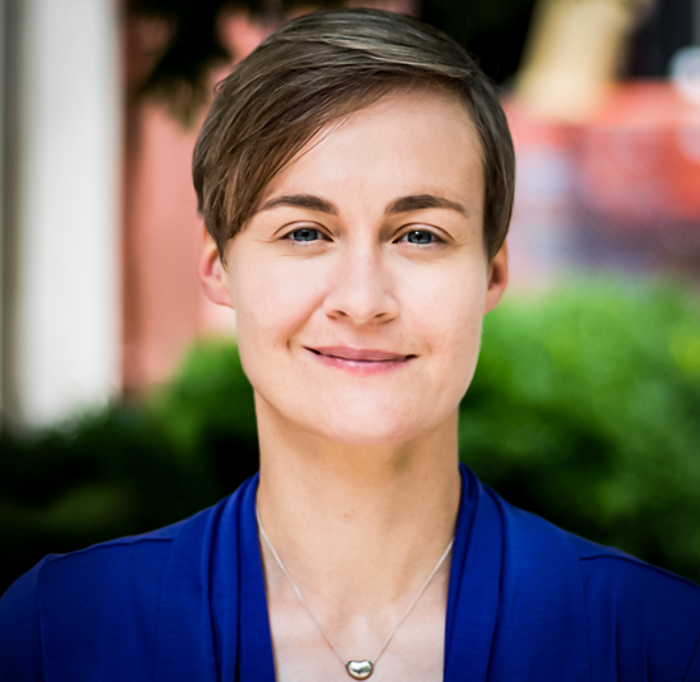 As vice president of event strategy and design for 360 Live Media, Beth Surmont works mostly with associations to build strategic frameworks for conferences. Specifically, she develops educational themes and relevant content, sharpening the content’s focus and how it will be delivered so that the event is on the leading edge of whichever industry an association serves.
As vice president of event strategy and design for 360 Live Media, Beth Surmont works mostly with associations to build strategic frameworks for conferences. Specifically, she develops educational themes and relevant content, sharpening the content’s focus and how it will be delivered so that the event is on the leading edge of whichever industry an association serves.A few months after ChatGPT launched in November 2022, Surmont began paying monthly for the upgraded version that’s more robust and which saves prompt threads so that planners can pick up where they left off in previous sessions. But when Spark, the A.I. platform built specifically for the event-planning industry, was released in beta version in spring 2023, Surmont found that its built-in task prompts and the datasets it is trained on were better suited to her needs. She still uses the basic version of ChatGPT and other general-purpose A.I. platforms for parts of her work, but Spark has become her primary resource.
How She Uses A.I.
“With event design, I’m usually a team of one,” Surmont notes. “It’s a big help for me to use A.I. platforms to figure out which topics a particular audience would care most about.” To start, she’ll submit prompts such as: What are the most important issues in this field? What are the latest market trends and customer needs, preferences, and desires? What are operational trends and challenges among the biggest companies? What are relevant technology trends? What are the most important regulatory issues?
To get more accurate results, Surmont also feeds the platform her own industry research plus transcripts of her interviews with industry players. In fact, “A.I. is great for transcribing and also creating summaries for all the audience interviews I do” as well as generating lists of the common themes and key points among those interviewed and other sources already in the prompt thread.
Lastly, she makes sure to verify the platform’s results for accuracy, accounting for the lag time most A.I. platforms have in updating their datasets along with occasional inaccuracies, or “hallucinations.”
While A.I. can give planners a running start on various tasks, “whatever it produces for you should be considered simply as thought starters,” Surmont notes. Once A.I. provides themes and issues, Surmont goes deeper, refining them with additional information, then re-entering them into the platform. Its next task: Generate various session topics and descriptions around those refined themes and issues. Most of the time, the initial results are “a good first attempt, but they need to be polished up” and couched in the event host’s style to connect with the audience.
In particular, A.I. helps Surmont hone in on the hot buttons for each attendee segment of an event. “I love to take a session description and ask Spark to revise it for, say, an academic audience, then an industry audience, and then a student audience. Each time, it changes the emphasis and tone, and I end up with content I can combine so that all attendee segments see themselves reflected in a description.” This also provides Surmont with content teasers for marketing use because “I now have messaging that’s based on what resonates strongly with each attendee type.”
As she refines all that content to match the meeting host’s brand voice, Surmont seeks out session presenters, with considerable assistance from A.I. For that task, a platform can generate possibilities that are more far-reaching and creative than an entire content-planning committee might produce. And once she secures presenters, Surmont uses Spark to create their biographies for the program by feeding in their LinkedIn pages while the platform discovers and combines other relevant information to complete the task.
One other useful capability of Spark and other A.I. platforms is suggesting a wide range of session formats to ensure variety across the event agenda and boost attendee interaction. Surmont notes that “the platform is basically brainstorming for me, and not every idea it puts out is good for my purposes. But whatever it gives me makes me think more creatively.” She finds A.I especially effective for exploring networking-session formats geared to her audience.
For planners who have not yet tried Spark, Surmont suggests they “get on and play around, and they’ll figure out what it can do for them pretty quickly because of the built-in prompts. For me, Spark becomes really useful when I’m working on something and get stuck. I think, ‘Let’s see what Spark has to say about this.’ It helps to unlock me and get me moving in a couple of directions rather than trying to start from a blank slate.”
Read More Meetings Industry A.I. Case Studies





